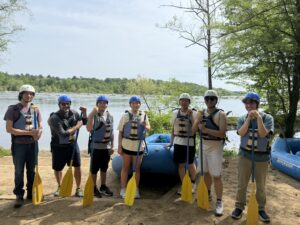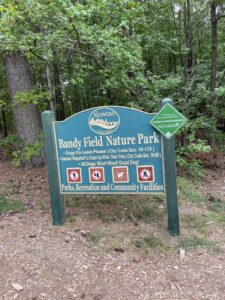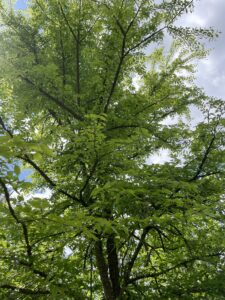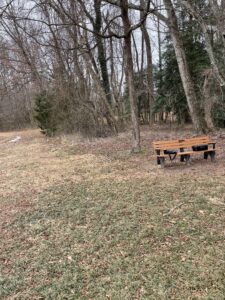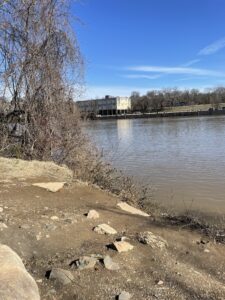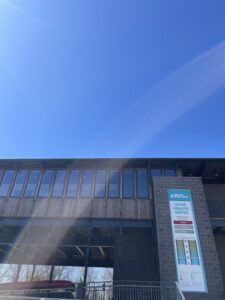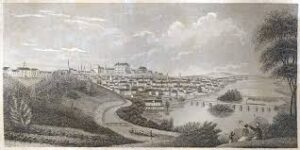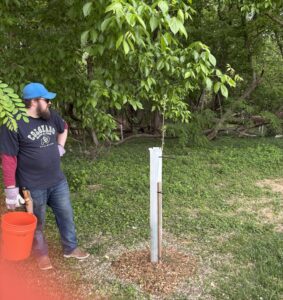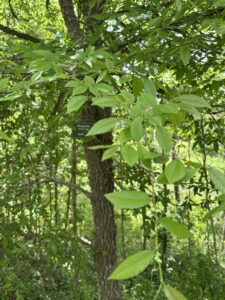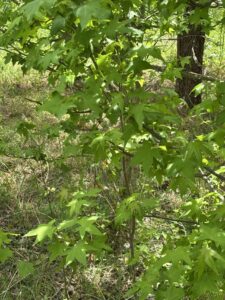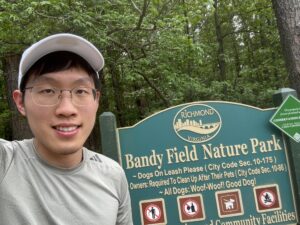Environmental issues can often feel abstract, but after people see them in real life, they become tangible, and people transform concerns into actions. Throughout this GEO 215 course, my understanding of sustainability deepened through lectures or readings and a wide array of embodied experiences in and outside of class that connected learning to live action. Whether testing water quality at the James River, volunteering at the Rethink Waste Basketball Game, or helping build a sustainable stage for a Shakespearean play, I saw that awareness alone is insufficient. The fusion of education, personal engagement, and creative outreach fosters meaningful and lasting environmental stewardship.
One moment epitomizing this was our visit to the James River Association’s River Education Center (Observation Log 4). I was drawn to the small wildlife in the water – tiny aquatic organisms invisible to most but essential indicators of water health. Discovering how their presence reflects the river’s ecological integrity opened my eyes to how even the smallest creatures play critical roles. I also learned about the river’s historical pollution, including the toxic Kepone spill by Allied Chemical. It was deeply inspiring to see how the James River has bounced back from a “D” to a “B” on its report card. It showed me that sustained effort and community commitment make environmental restoration possible. This field experience made the concept of “watershed health” tangible and emotionally resonant.
This transformation lesson continued in my hands-on experience during Invasive Species Awareness Week, where I volunteered to remove ivy from the Eco-Corridor (CBL Observation Log 3). Unlike classroom discussions, cutting down the invasive vines myself let me realize how aggressive and damaging these species can be. The vines were wrapped tightly around trees, which threatened the survival of native plants and posed a physical challenge for me to remove them. This experience grounded my understanding of ecological disruption and restoration, reinforcing the need for community-led conservation efforts.
Volunteering at the Rethink Waste Basketball Game gives me insight into waste management as a community education challenge (CBL Observation Log 2). While I was stationed at a bin, the encounters I had were eye-opening. I realized how vital clear communication and positive engagement are in encouraging sustainable habits. Although Some people ignored the signage and me, many still would follow my instructions. Besides, many people were unaware that the tissue paper offered at the University of Richmond is compostable, underscoring the importance of institutional messaging. Composting isn’t just about reducing landfill mass – it also benefits watershed health by minimizing nutrient pollution and supporting soil vitality. Events like this show how behavioral nudges in everyday spaces can shape environmental consciousness.
Art, too, has the power to educate and activate. As You Liked It, a sustainable production of Shakespeare’s play, brought the message of environmental care to the stage (CBL Observation Log 1). Having helped create props from recycled materials, I saw firsthand how creativity can repurpose waste into beauty. The show’s use of 90-95% reused materials from the university’s waste stream was more than a design choice; it was a narrative strategy that embedded sustainability into the audience’s experience. This ties directly into our class discussions about how waste affects watersheds. When aligned with environmental values, art can engage people in a way that lectures or statistics alone cannot.
Across all these experiences, I saw that environmental awareness flourishes when rooted in participation. My classmate Yixuan has echoed similar insights. He reflects on the James River’s recovery from past pollution crises. In his synthetic observation log, he emphasizes the importance of community engagement through storytelling, education, and hands-on restoration projects to foster a sense of place and collective responsibility. His reflection reveals a shared truth: when people are involved, they care; when they care, they act.
In conclusion, environmental education cannot be confined to classrooms. We must intertwine knowledge with action and outreach to foster sustainable mindsets and behaviors. The river, the forest, the compost bin, and even the stage serve as learning spaces. Whether pulling ivy, sorting trash or making cardboard trees for a play, each act of engagement builds our collective capacity to protect and renew our world. Sustainability begins not just with knowing – but with doing.
P.S. I don’t have specific pictures for this synthetic observation log, so I decide to put the photo of our whole class before rafting. I really enjoy this class!
